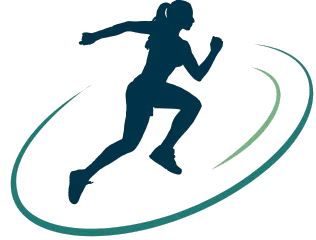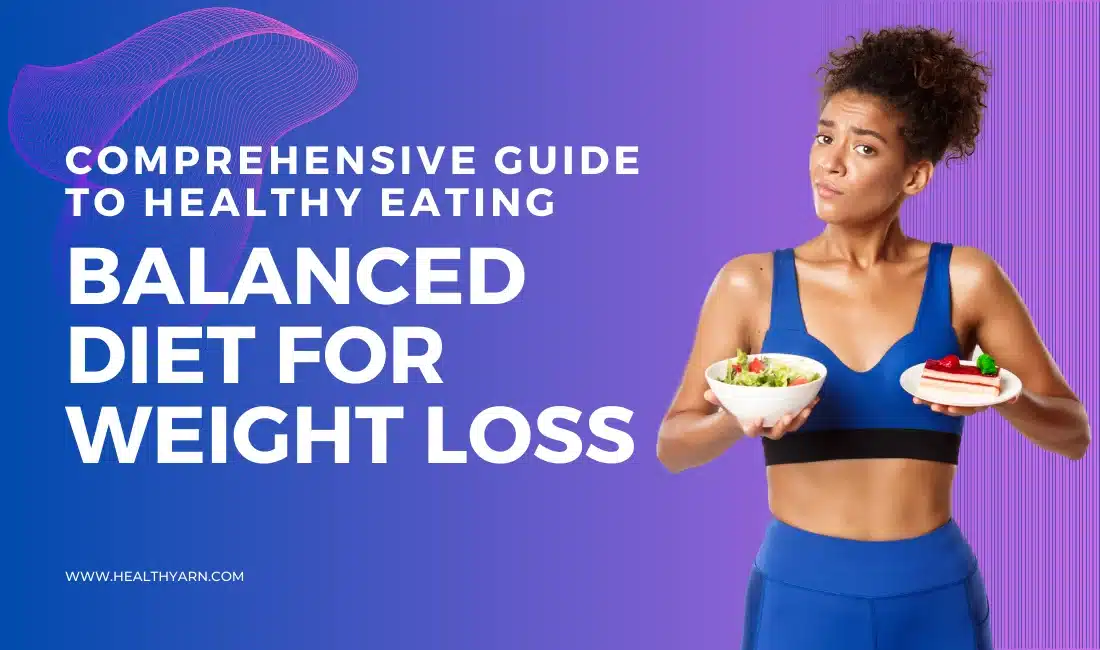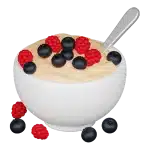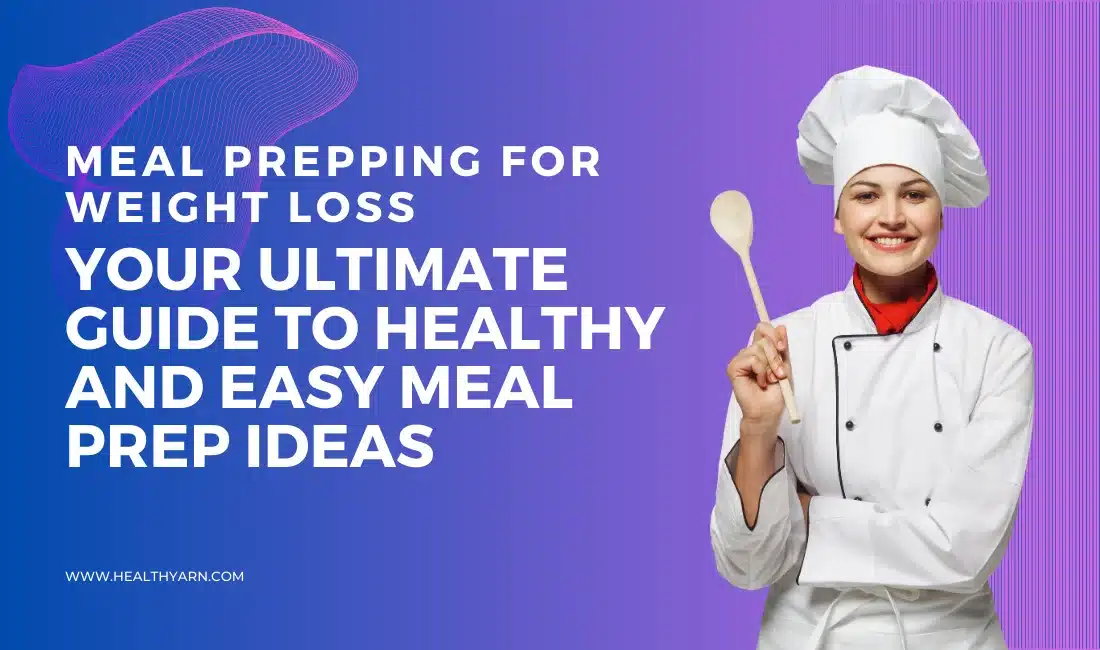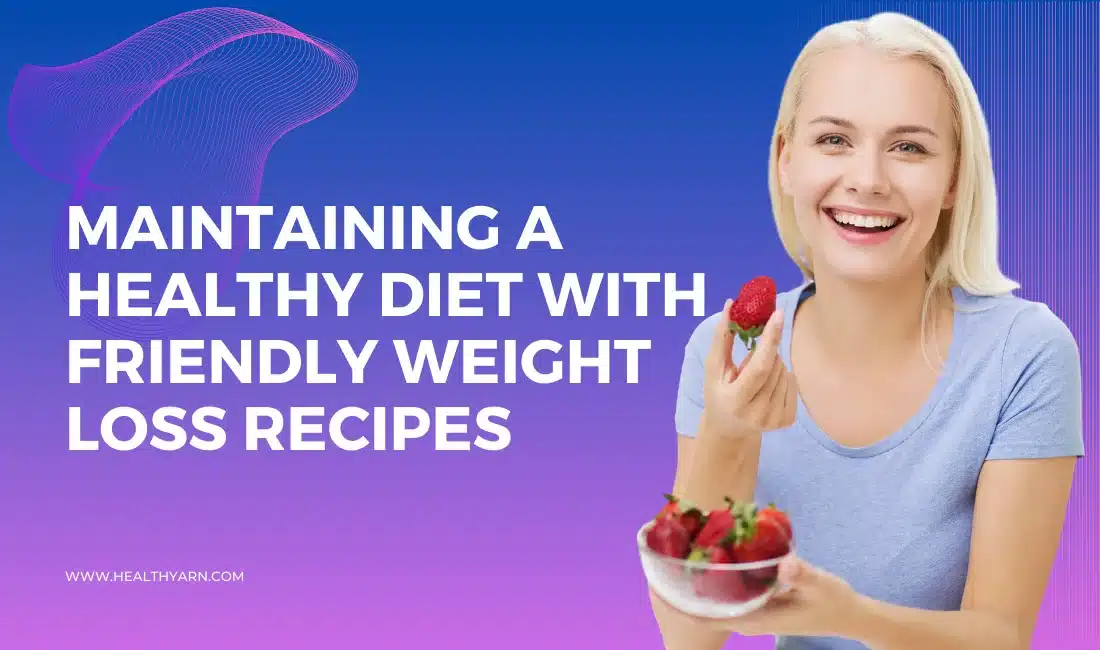Balanced Diet for Weight Loss A Guide to Healthy Eating
Introduction To Balanced Diet for Weight Loss
A balanced diet plays a crucial role in achieving weight loss goals and maintaining overall well-being. When it comes to shedding those extra pounds, crash diets and extreme measures are not sustainable solutions. Instead, focusing on a balanced diet can lead to long-term success and a healthier lifestyle. In this article, we will explore the importance of a balanced diet for weight loss and discuss the significance of setting realistic goals.
Embarking on a weight loss journey without considering the importance of a balanced diet is like trying to build a house without a solid foundation. A balanced diet provides your body with the essential nutrients, vitamins, and minerals it needs to function optimally. It is the key to unlocking a healthy weight loss process while ensuring your body remains nourished and energized.
Setting Realistic Goals
When it comes to weight loss, setting realistic goals is paramount. Unrealistic expectations can lead to disappointment, frustration, and ultimately, giving up on your weight loss efforts. Setting achievable goals helps you stay motivated and on track. Remember, slow and steady progress is far more sustainable than quick fixes that often result in rebound weight gain.
Key Takeaways
- A balanced diet is crucial for weight loss and overall well-being.
- High-fiber foods promote satiety and aid digestion.
- Protein-rich foods preserve lean muscle mass and control cravings.
- Nutrient-dense foods provide essential vitamins and minerals while being low in calories.
- Separate fact from fiction when it comes to weight loss diet myths.
- Seek professional guidance for personalized advice and support.
High-Fiber Foods for Weight Loss
Fiber is a powerful ally in your weight loss journey. Not only does it promote satiety and reduce cravings, but it also aids in digestion and regulates blood sugar levels. Let’s delve into the benefits of a high-fiber diet, explore ways to increase fiber intake, and discover some examples of high-fiber foods with their weight loss benefits.
Benefits of a High-Fiber Diet
Incorporating a high-fiber diet into your weight loss plan can yield numerous benefits. Firstly, fiber-rich foods are generally lower in calories, allowing you to consume a larger volume of food while keeping calorie intake in check. Secondly, fiber adds bulk to your meals, making you feel fuller for longer periods, which helps control portion sizes and prevent overeating. Lastly, fiber promotes healthy digestion, preventing constipation and ensuring your body efficiently eliminates waste.
How to Increase Fiber Intake
Boosting your fiber intake is easier than you might think. Start by incorporating whole grains such as oats, brown rice, and quinoa into your meals. Add more fruits and vegetables to your plate, as they are excellent sources of dietary fiber. Legumes, such as lentils and beans, are also packed with fiber. Additionally, opting for whole fruits over juices and choosing whole grain products instead of refined grains will help you increase your fiber consumption.
Examples of High-Fiber Foods and Their Weight Loss Benefits
Including high-fiber foods in your diet can give your weight loss efforts a significant boost. Some examples of fiber-rich foods include:
- Broccoli: This cruciferous vegetable is not only high in fiber but also rich in essential vitamins and minerals. It aids digestion and provides a sense of fullness, making it a great addition to any weight loss plan.
- Chia Seeds: These tiny seeds are a nutritional powerhouse. They are loaded with fiber, omega-3 fatty acids, and antioxidants. Chia seeds absorb liquid and expand in your stomach, curbing your appetite and promoting weight loss.
- Avocado: This creamy fruit is not only delicious but also a great source of fiber. Avocado’s high monounsaturated fat content contributes to feelings of satiety and aids in weight management.
- Black Beans: Packed with protein and fiber, black beans are an excellent addition to any weight loss diet. They keep you feeling full and satisfied while providing essential nutrients.
Protein-Rich Foods for Weight Loss
Protein is an essential nutrient that plays a vital role in weight loss. Including protein-rich foods in your diet can help you preserve lean muscle mass, boost metabolism, and control cravings. Let’s explore the importance of protein in weight loss, discover some lean protein sources, and even explore a few recipes that incorporate protein-rich foods.
Role of Protein in Weight Loss
Protein is often referred to as the building block of life, and for good reason. It is crucial for repairing tissues, building muscle, and maintaining overall health. When it comes to weight loss, protein has unique properties that make it an invaluable asset. Firstly, protein promotes satiety, making you feel fuller for longer periods and reducing the desire to snack on unhealthy foods. Secondly, protein has a higher thermic effect than fats and carbohydrates, meaning your body burns more calories digesting and metabolizing it.
Lean Protein Sources for Weight Loss
Incorporating lean protein sources into your meals can enhance weight loss efforts and contribute to overall health. Some examples of protein-rich foods include:
- Chicken Breast: Skinless chicken breast is an excellent source of lean protein. It is low in calories and high in nutrients, making it a staple in many weight loss diets.
- Greek Yogurt: Packed with protein and probiotics, Greek yogurt is a delicious and nutritious option for weight loss. Choose plain, unsweetened varieties to avoid added sugars.
- Eggs: Eggs are a versatile and affordable protein source. They are packed with essential amino acids, vitamins, and minerals. Incorporating eggs into your breakfast can help control appetite throughout the day.
- Salmon: Rich in omega-3 fatty acids and high-quality protein, salmon is not only good for your heart but also for weight loss. Its satisfying and nutritious nature makes it an excellent choice for any balanced diet.
Recipes Incorporating Protein-Rich Foods
Here are a couple of recipe ideas to inspire you to incorporate protein-rich foods into your weight loss journey:
Grilled Chicken Salad:
Ingredients:
- 4 oz grilled chicken breast
- Mixed salad greens
- Cherry tomatoes
- Cucumber slices
- Lemon vinaigrette dressing (made with lemon juice, olive oil, Dijon mustard, salt, and pepper)
Instructions:
- Grill the chicken breast until cooked through.
- Toss the mixed salad greens, cherry tomatoes, and cucumber slices in a bowl.
- Slice the grilled chicken breast and place it on top of the salad.
- Drizzle the lemon vinaigrette dressing over the salad.
- Enjoy a nutritious and protein-packed meal!
Greek Yogurt Parfait:
Ingredients:
- Greek yogurt (plain, unsweetened)
- Mixed berries (strawberries, blueberries, raspberries)
- Granola or chopped nuts
- Honey (optional)
Instructions:
- In a glass or bowl, layer Greek yogurt, mixed berries, and granola or chopped nuts.
- Repeat the layers until desired amount is achieved.
- Drizzle honey on top if desired for added sweetness.
- Indulge in a protein-rich and satisfying Greek yogurt parfait!
Nutrient-Dense Foods for Weight Loss
When it comes to weight loss, not all foods are created equal. Focusing on nutrient-dense foods ensures that your body receives a wide array of essential vitamins, minerals, and antioxidants while keeping calorie intake in check. Let’s explore the concept of nutrient density, understand the importance of essential vitamins and minerals, and discover a list of nutrient-dense foods to include in your diet.
Understanding Nutrient Density
Nutrient density refers to the amount of nutrients a food contains in relation to its calorie content. In other words, it is about getting the most bang for your buck when it comes to nutrition. Nutrient-dense foods provide a plethora of vitamins, minerals, and other beneficial compounds while being relatively low in calories. These foods are a powerhouse of nutrition and can help optimize weight loss while nourishing your body.
Essential Vitamins and Minerals for Weight Loss
Certain vitamins and minerals play a crucial role in supporting weight loss and overall health. Here are a few examples:
- Vitamin C: This powerful antioxidant not only supports the immune system but also aids in weight management. Foods rich in vitamin C include citrus fruits, bell peppers, and strawberries.
- Calcium: Research suggests that calcium-rich foods can enhance weight loss efforts. Dairy products, leafy greens, and fortified plant-based milk are excellent sources of calcium.
- Iron: Iron is essential for maintaining energy levels and supporting metabolism. Incorporate iron-rich foods such as lean meats, legumes, and dark leafy greens into your diet.
List of Nutrient-Dense Foods to Include in Your Diet
Including nutrient-dense foods in your weight loss plan ensures you nourish your body while achieving your goals. Here are some examples of nutrient-dense foods to consider:
- Leafy greens (spinach, kale, Swiss chard)
- Berries (blueberries, raspberries, strawberries)
- Cruciferous vegetables (broccoli, cauliflower, Brussels sprouts)
- Colorful fruits (oranges, mangoes, papayas)
- Lean proteins (chicken breast, turkey, tofu)
- Whole grains (quinoa, brown rice, oats)
- Nuts and seeds (almonds, chia seeds, flaxseeds)
- Legumes (lentils, chickpeas, black beans)
Dispelling Weight Loss Diet Myths
In the realm of weight loss, misinformation and myths abound. It is crucial to separate fact from fiction to make informed decisions about your health. Let’s tackle some common misconceptions about weight loss diets and clarify the facts, debunking these myths once and for all.
Common Misconceptions about Weight Loss Diets
Myth: Cutting out carbs is the key to weight loss.
Fact: Carbohydrates are an essential macronutrient and a valuable source of energy. The key lies in choosing complex carbohydrates over refined ones and focusing on portion control.
Myth: You have to avoid all fats to lose weight.
Fact: Healthy fats, such as those found in avocados, nuts, and olive oil, are crucial for overall health and satiety. It’s important to choose healthy fats in moderation.
Myth: Skipping meals is an effective weight loss strategy.
Fact: Skipping meals can lead to overeating and slowed metabolism. It is best to eat regular, balanced meals and listen to your body’s hunger and fullness cues.
Clarifying Facts and Debunking Myths
The world of weight loss can be confusing, but understanding the facts can help you navigate it successfully. Here are a few important truths to remember:
- Calorie deficit is key: To lose weight, you need to consume fewer calories than you burn. It’s all about creating a calorie deficit through a balanced diet and regular physical activity.
- Sustainable lifestyle changes: Long-term weight loss is best achieved through sustainable lifestyle changes rather than short-term fad diets. Focus on nourishing your body, making healthier choices, and finding joy in physical activity.
- Individualization is vital: There is no one-size-fits-all approach to weight loss. Each person is unique, and what works for one may not work for another. Consulting with professionals can provide personalized guidance tailored to your specific needs and goals.
Conclusion
Achieving weight loss goals goes beyond temporary fixes and quick solutions. Embracing a balanced diet that includes high-fiber foods, protein-rich sources, and nutrient-dense options is the key to sustainable weight loss and overall well-being. Remember to set realistic goals, dispel weight loss myths, and seek professional advice when needed. By making informed choices and prioritizing your health, you can embark on a successful weight loss journey.
